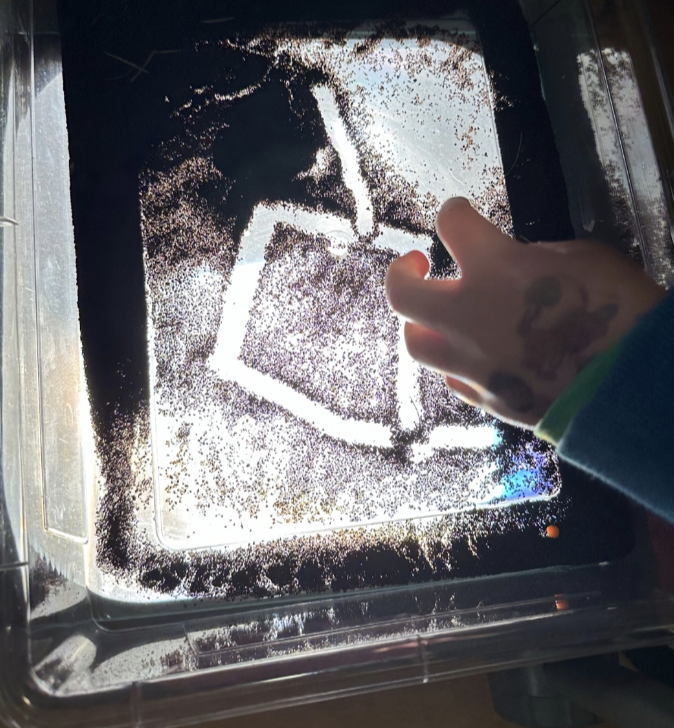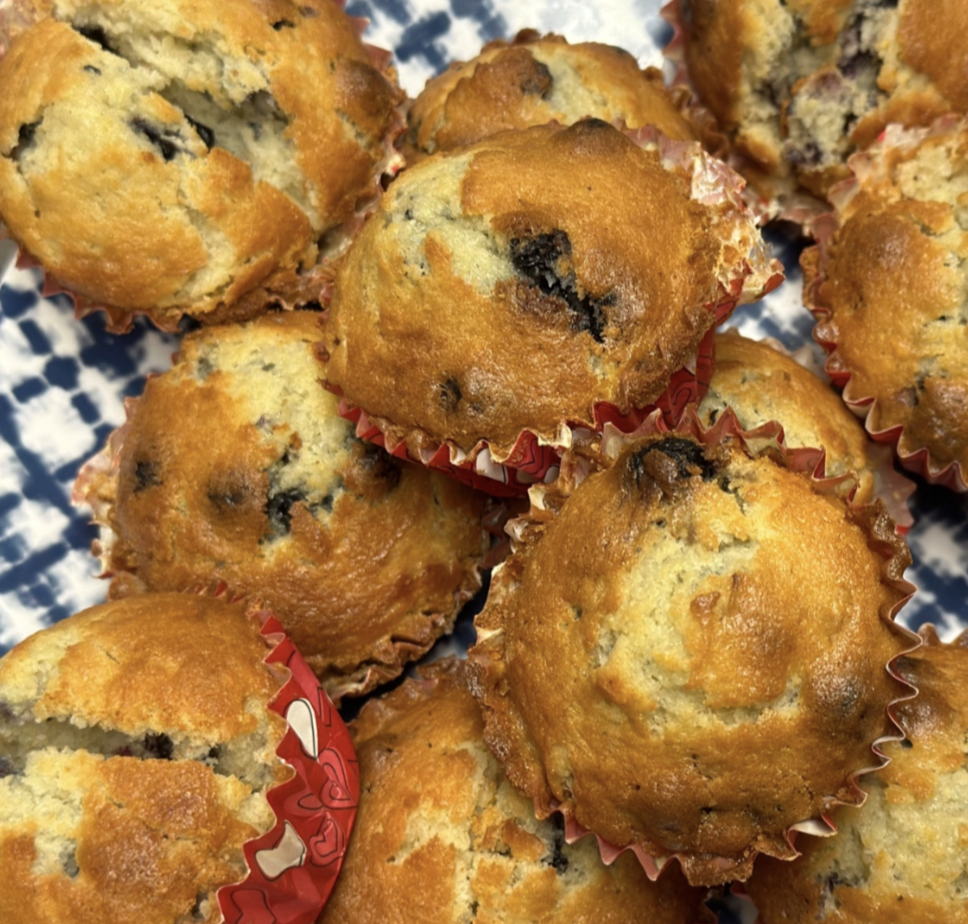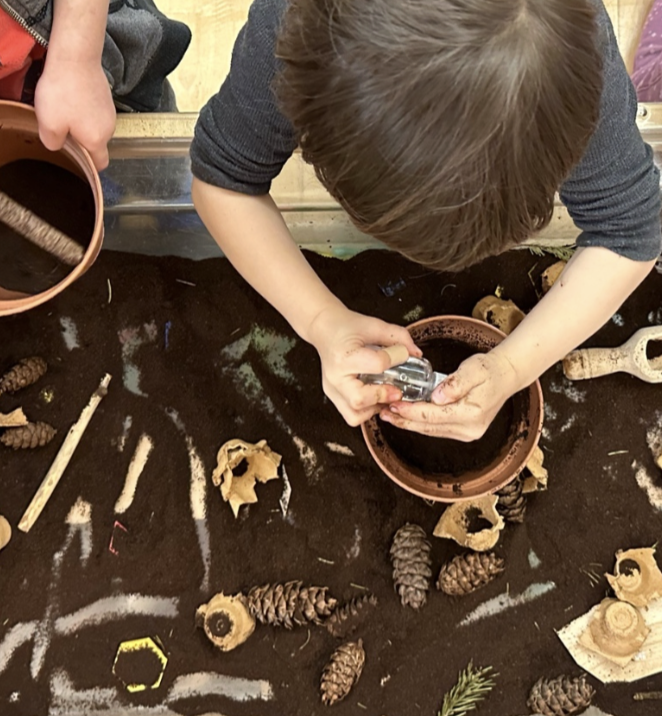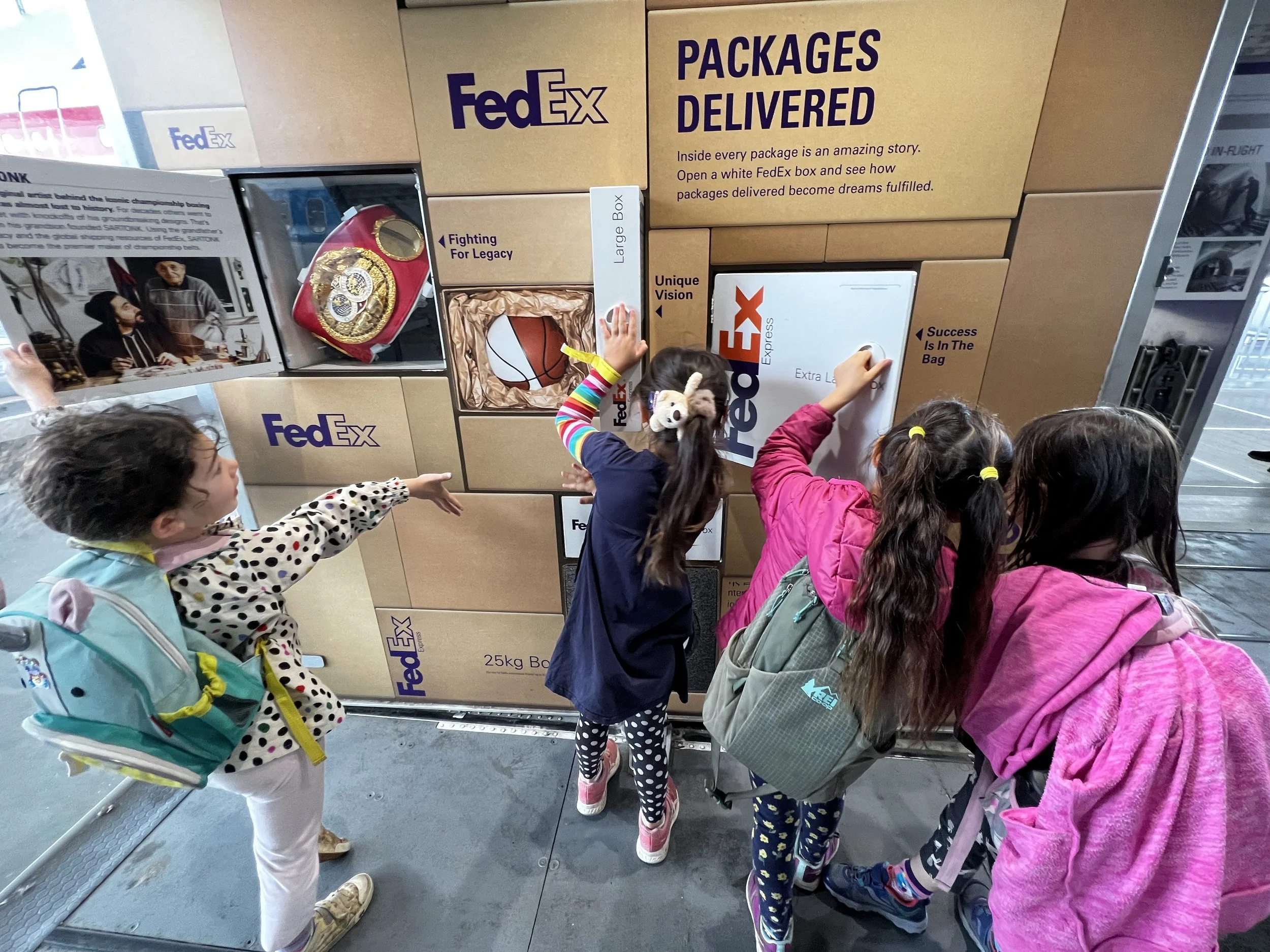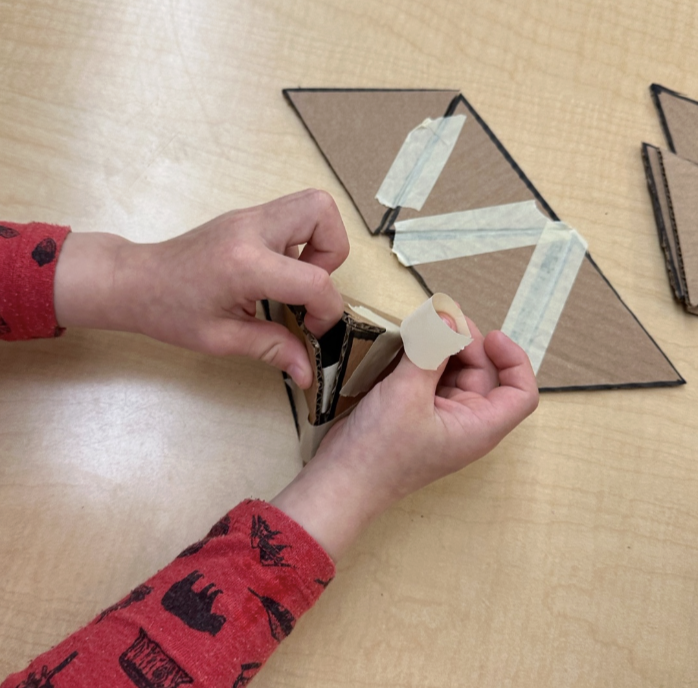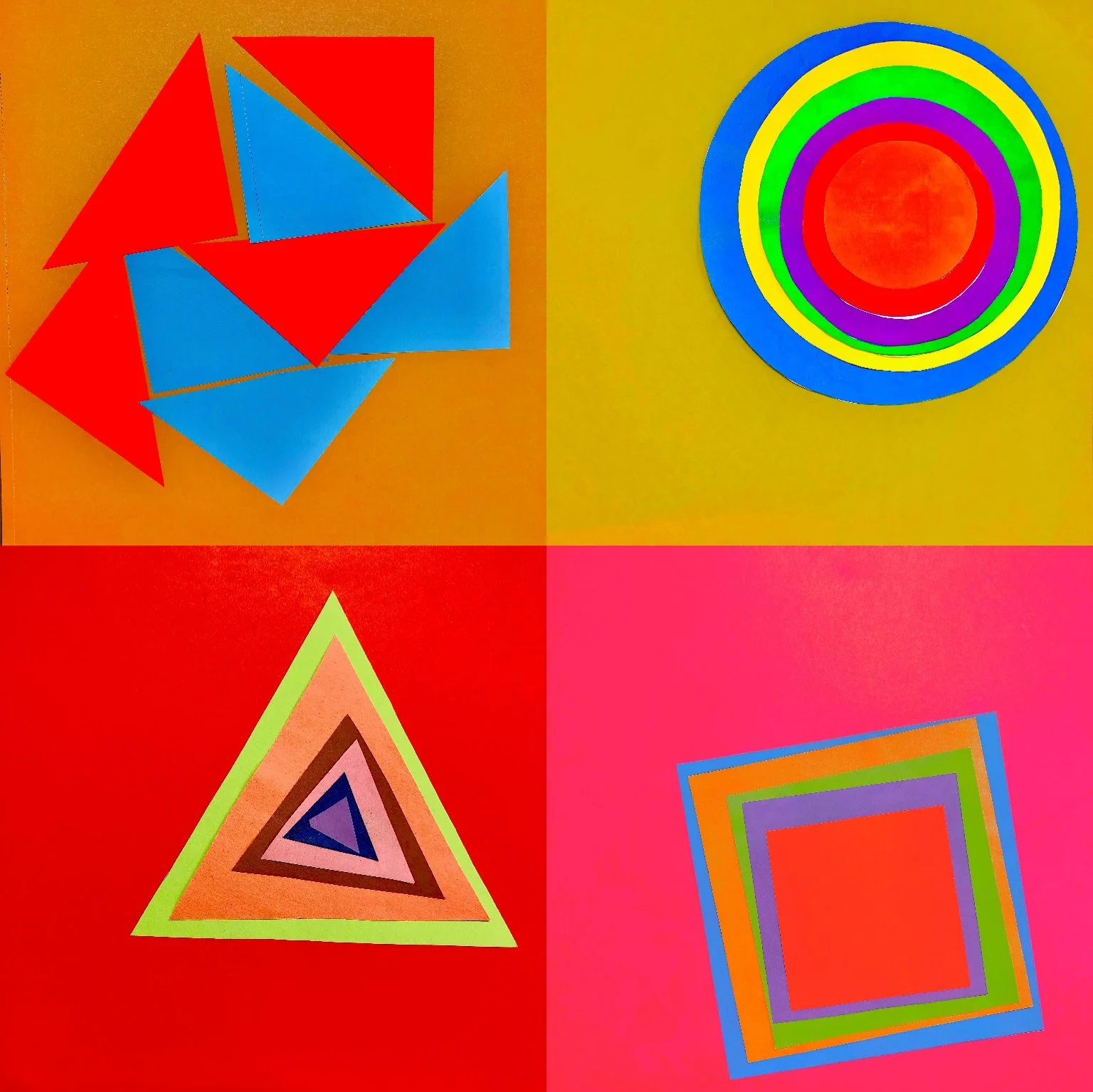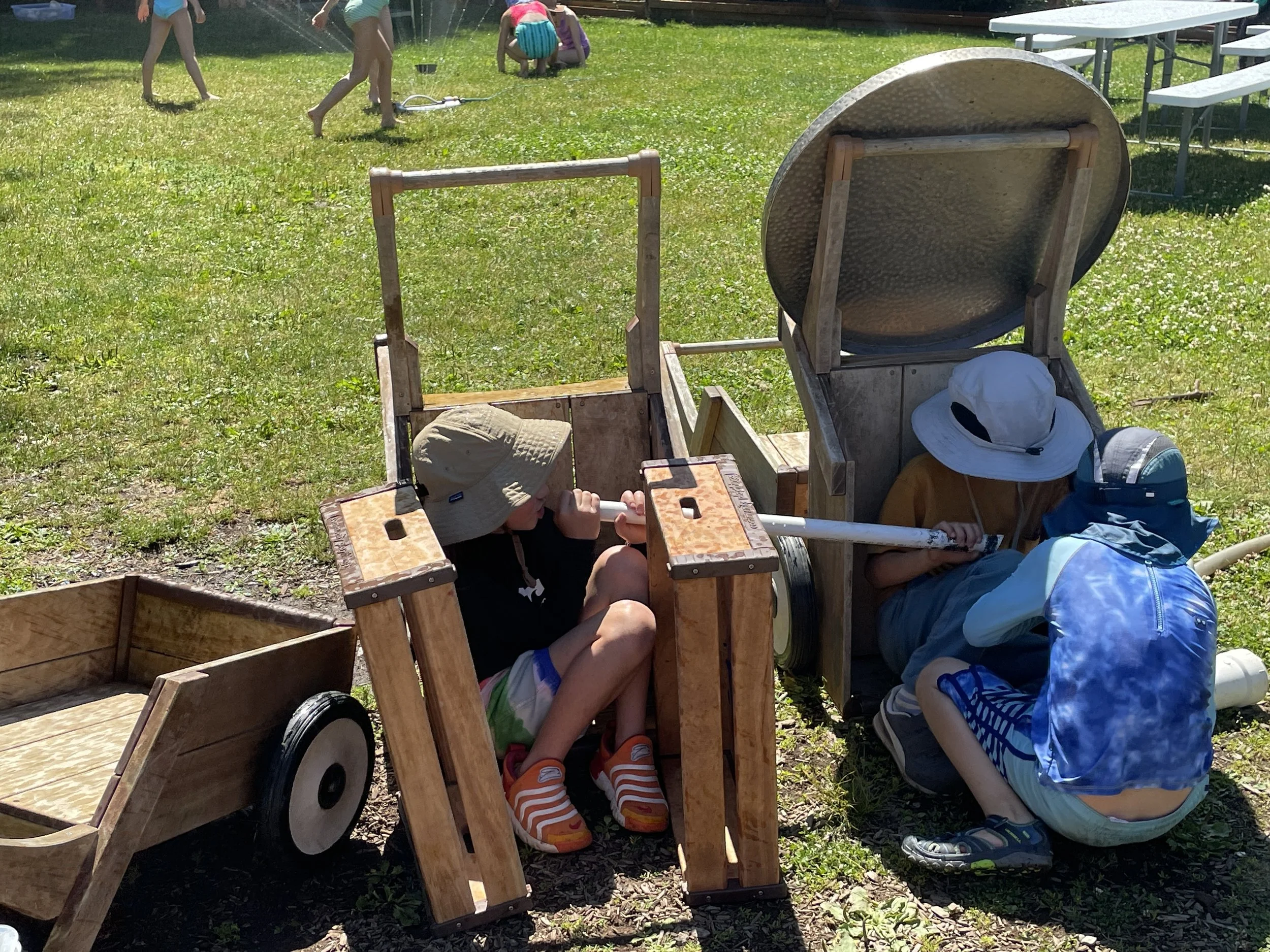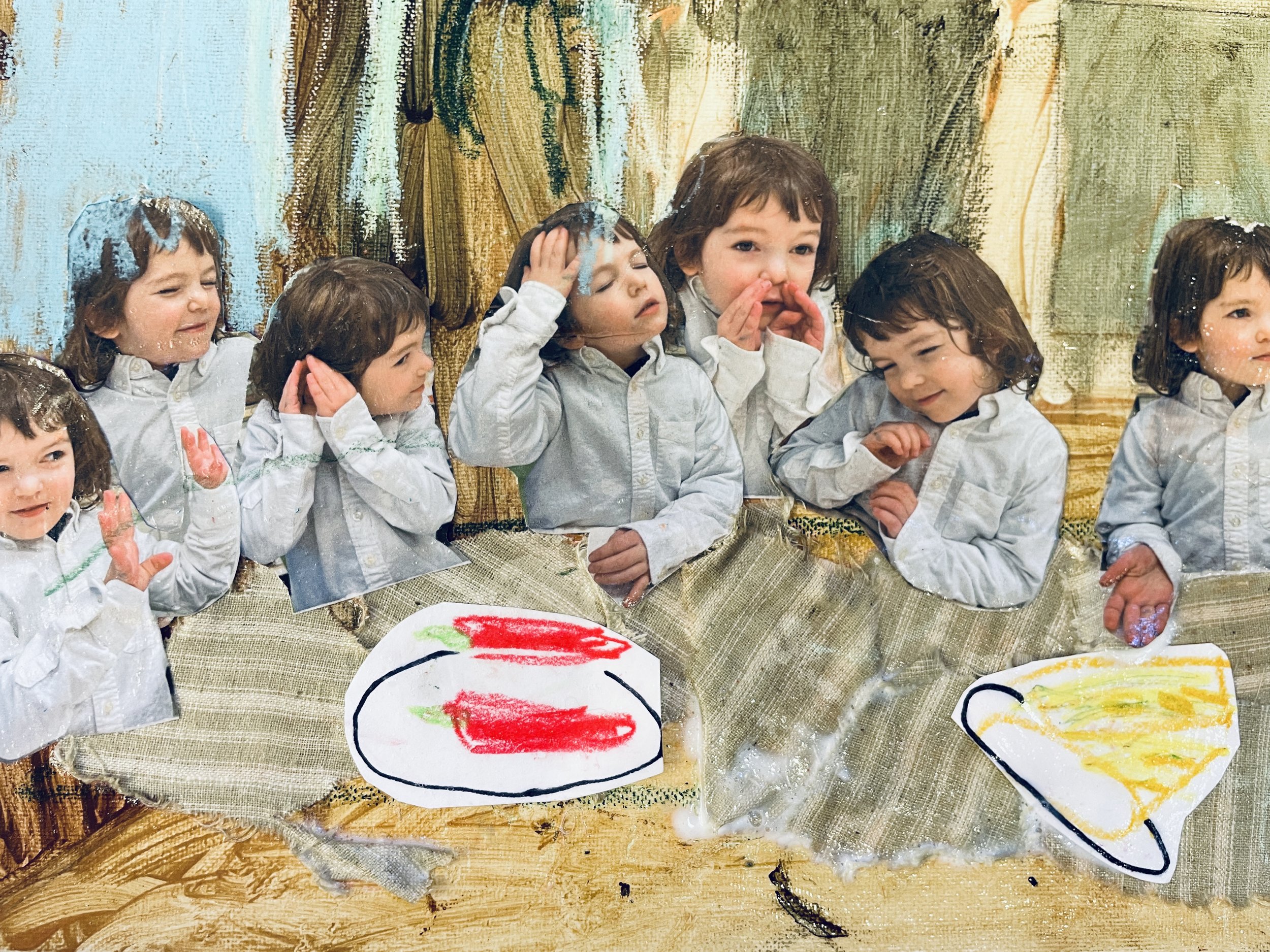
PreK 2 Program Overview
Teacher-Student Ratio 1:7.5 (max)
Class Size: 20 students/class (max)
Curriculum: The PreK 2 Curriculum occurs in an 80% Mandarin immersion environment. The students have core curricular classes and specialty classes each week, along with 2 hours of meal & playtime each day. The curriculum also includes ongoing enrichment, a hallmark feature of our elementary program.
Language Ratio Mandarin 80%, English 15%, Spanish 5%
Learn more about Fire & Golden Dragon Teachers
Sample Schedule
PreK 1 Students have a full Assessment Progress Report that is shared 3 times a year. It covers all academic subjects, social-emotional learning and a portrait of the student in the Prek 2 year.
PreK 2 Program at IFS
The PreK 2 program places a strong emphasis on developing executive functioning skills. Children engage in activities that promote planning, organizing, and self-regulation. They learn to set simple goals, follow multi-step instructions, and manage their time using visual schedules. These skills lay the foundation for future academic success and personal development.
Building resiliency is a key focus of the program. Children are encouraged to develop a growth mindset, learning to persevere through challenges and view mistakes as opportunities for learning. They are taught coping strategies to manage their emotions and are provided with safe opportunities to take supported risks, fostering confidence and adaptability.
Ample play and park time are integral to the PreK 2 experience. Daily outdoor play and exploration are scheduled, allowing children to develop gross motor skills, social abilities, and creativity. Nature-based learning activities are incorporated, connecting outdoor experiences with classroom learning.
The program maintains high standards in Mandarin literacy. Daily Mandarin immersion activities introduce children to character writing with proper stroke order. Vocabulary is expanded through themed units, and Mandarin songs, stories, and cultural activities are regularly incorporated, providing a rich language learning environment.
Introducing Math Lab, where children begin to navigate through engaging math problems independently. Hands-on manipulatives and interactive stations encourage exploration of mathematical concepts. Peer collaboration is encouraged, and technology is integrated through age-appropriate math games, fostering both independence and teamwork in problem-solving.
This comprehensive approach ensures that PreK 2 students receive a well-rounded education that prepares them for future academic challenges while nurturing their natural curiosity and love for learning.
Core Subjects
-
Curriculum Resources: First Steps by Level Learning
Character Recognition: Students will recognize and identify approximately 40-50 common Chinese characters. These will include basic radicals, numbers, and characters related to everyday objects, family members, and simple actions.
Stroke Order: Students will understand the importance of stroke order in writing Chinese characters. They will be able to write about 20-30 simple characters with correct stroke order, focusing on characters with fewer strokes.
Listening Comprehension: Children will understand simple instructions, short stories, and conversations in Mandarin related to familiar topics such as family, school, and daily routines.
Speaking Skills: Students will be able to use simple phrases and short sentences to express basic needs, describe familiar objects, and participate in simple conversations. They will practice proper pronunciation and tones.
Vocabulary Building: Children will expand their Mandarin vocabulary, learning words related to colors, numbers (1-20), animals, food items, body parts, and common objects in their environment.
Cultural Awareness: Students will be introduced to basic elements of Chinese culture through stories, songs, and cultural activities, enhancing their understanding and appreciation of the language's context.
Reading Simple Texts: With support, children will begin to read very simple texts in Chinese, such as short sentences or simple picture books with characters they have learned.
Character Components: Students will start to recognize common components or radicals within characters, understanding how these can provide clues to a character's meaning or pronunciation.
Writing Practice: Children will practice writing characters in the air, on paper, and using various tactile materials. They will begin to write simple words or short phrases using characters they have learned.
These standards provide a solid foundation in Mandarin literacy for PreK 2 students, focusing on building basic skills across reading, writing, listening, and speaking. The emphasis is on creating a positive, immersive language learning experience that prepares children for more advanced Mandarin study in future years.
-
Curriculum Resources:
We offer students both grade level and advanced standards in math learning.
Number Sense and Counting: Children will confidently count to 30 and recognize numbers up to 20. They'll understand one-to-one correspondence and begin to grasp the concept of cardinality. Simple skip counting by 2s and 5s will be introduced.
Basic Addition and Subtraction: Students will start to understand the concepts of adding and taking away using concrete objects. They'll solve simple addition problems within 10 and subtraction problems within 5.
Shapes and Spatial Relationships: Children will identify and describe basic 2D and 3D shapes. They'll begin to understand spatial relationships, using terms like "above," "below," "beside," and "between."
Measurement: Students will compare and order objects based on measurable attributes like length, weight, and capacity. They'll use non-standard units for measurement.
Patterns: Children will recognize, copy, extend, and create simple patterns using objects, shapes, or numbers.
Advanced Math Standards for PreK 2:
Advanced Number Sense: Some children may begin to understand place value concepts, recognizing tens and ones in numbers up to 50. They might start exploring simple fractions like halves and quarters in real-life contexts.
Complex Addition and Subtraction: Advanced students may solve word problems involving addition and subtraction within 20, using objects or drawings to represent the problem.
Geometry: Children might begin to combine shapes to form larger shapes and start recognizing symmetry in the environment.
Data and Graphs: Students could create and interpret simple pictographs and bar graphs, collecting and organizing data from their everyday experiences.
Time and Money: Advanced learners may start to tell time to the hour on analog clocks and recognize the value of different coins.
Early Algebraic Thinking: Some children might explore simple function machines, understanding input and output in a playful context.
These standards provide a framework for mathematical learning in PreK 2, with room for differentiation based on individual student abilities and interests. The focus remains on hands-on, concrete experiences that build a strong foundation for future mathematical understanding.
-
Here are the benefits of Project-Based Learning (PBL) for PreK 2 students:
Enhanced Engagement: PBL captures children's natural curiosity, making learning more exciting and relevant to their interests.
Develops Critical Thinking: By solving real-world problems, children learn to think critically and creatively from an early age.
Improves Communication Skills: Projects often involve sharing ideas and presenting findings, boosting verbal and non-verbal communication skills.
Fosters Collaboration: Working on projects together helps children develop teamwork and social skills.
Encourages Independence: PBL allows children to take ownership of their learning, promoting self-direction and initiative.
Integrates Multiple Subjects: Projects often span various subjects, helping children see connections between different areas of learning.
Builds Confidence: Completing projects gives children a sense of accomplishment, boosting their self-esteem.
Promotes Inquiry-Based Learning: PBL encourages children to ask questions and seek answers, fostering a love for learning.
Develops Planning Skills: Projects help children learn to plan and organize, enhancing their executive functioning skills.
Accommodates Different Learning Styles: PBL allows for various approaches, catering to visual, auditory, and kinesthetic learners.
Enhances Problem-Solving Skills: Children learn to identify problems and find solutions through project work.
Encourages Family Involvement: Many projects can involve families, strengthening the home-school connection.
Promotes Cultural Awareness: Projects can explore diverse cultures, fostering understanding and respect for differences.
Develops Technology Skills: Age-appropriate technology can be integrated into projects, building early digital literacy.
Prepares for Future Learning: PBL helps develop skills crucial for success in later academic years and beyond.
Project-Based Learning in PreK 2 lays a strong foundation for lifelong learning, helping children develop crucial skills while engaging in meaningful, enjoyable experiences.
-
Curriculum Resource PreK2:
Phonological Awareness: Identify rhymes, segment words into syllables, and recognize alliteration. Advanced learners may isolate initial, medial, and final sounds in simple words.
Letter Knowledge: Recognize and name all uppercase and lowercase letters. Associate most letters with their common sounds.
Print Concepts: Understand basic print conventions, including directionality and word spacing.
Vocabulary: Use and understand a growing number of words. Begin to categorize common words.
Comprehension: Demonstrate understanding of stories read aloud. Retell familiar stories and answer questions about key details.
Writing: Use drawing, dictating, and early writing to express ideas. Begin using invented spelling.
Speaking and Listening: Participate in conversations, follow discussion rules, and express ideas clearly.
Book Knowledge: Handle books correctly and identify basic book parts. Understand the role of authors and illustrators.
Word Recognition: Begin to recognize common sight words.
Emergent Reading: With support, read simple texts using picture cues and beginning sound knowledge.
Specialty Subjects
-
Gross Motor Skills: Students will refine fundamental movement skills such as running, jumping, hopping, and skipping. They'll practice maintaining balance while moving and stopping.
Ball Skills: Children will develop skills in throwing, catching, kicking, and bouncing balls of various sizes. They'll begin to aim at targets and practice hand-eye coordination.
Spatial Awareness: Students will learn to move safely in general space, avoiding collisions with others and objects. They'll practice changing direction and speed on command.
Locomotor Movements: Children will combine different locomotor movements (e.g., run-jump, hop-skip) and perform them to rhythmic patterns.
Strength and Endurance: Students will engage in activities that build muscular strength and cardiovascular endurance appropriate for their age, such as animal walks or obstacle courses.
Flexibility: Children will practice simple stretching exercises, improving their range of motion and body awareness.
Cooperative Games: Students will participate in group games that emphasize cooperation, following rules, and good sportsmanship.
Dance and Rhythm: Children will explore creative movement and simple dance steps, responding to various musical rhythms.
Health and Nutrition: Students will learn about the importance of physical activity and healthy eating habits.
Fine Motor Skills: While primarily developed in other areas of the curriculum, PE will also include activities to enhance fine motor control.
Body Awareness: Children will identify major body parts and practice activities that develop body awareness and control.
This PE program for PreK 2 focuses on developing fundamental movement skills, promoting physical fitness, and fostering a positive attitude towards physical activity. The emphasis is on fun, age-appropriate activities that support overall physical development.
-
Visual Arts Exploration: Students will experiment with a variety of art materials and tools, including paints, clay, crayons, and collage materials. They'll explore color mixing and begin to understand primary and secondary colors.
Art Techniques: Children will learn basic art techniques such as drawing, painting, sculpting, and printmaking. They'll practice controlled use of scissors and develop fine motor skills through activities like beading and lacing.
Creative Expression: Students will use art to express their ideas, feelings, and experiences. They'll create both realistic and imaginative artworks, developing their personal style.
Art Appreciation: Children will be introduced to various artists and art styles. They'll discuss their own artwork and that of others, learning to respect different artistic expressions.
Cultural Art: Students will explore art from different cultures, creating projects inspired by diverse traditions and techniques.
3D Construction: Children will experiment with creating three-dimensional structures using various materials, developing spatial awareness and problem-solving skills.
Art and Nature: Students will use natural materials in art projects and create art inspired by observations of the natural world.
Digital Art: With guidance, children will be introduced to simple digital art tools, expanding their understanding of artistic mediums.
Art Integration: Art activities will be integrated with other subjects, reinforcing learning across the curriculum.
This approach to art education in PreK 2 emphasizes exploration, creativity, and skill development while fostering an appreciation for diverse artistic expressions.
-
Certainly! Here's a simple overview of STEAM (Science, Technology, Engineering, Art, and Mathematics) standards for PreK 2:
Science:
Observe and describe natural phenomena
Conduct simple experiments with guidance
Learn basic concepts about plants, animals, and weather
Technology:
Explore simple machines and how they work
Introduction to basic digital tools with supervision
Understand technology in daily life (e.g., phones, computers)
Engineering:
Design and build simple structures using blocks or recycled materials
Solve basic problems through trial and error
Understand the design process: plan, create, test, improve
Art:
Experiment with various art materials and techniques
Create art inspired by observations of the world
Express ideas and feelings through visual arts
Mathematics:
Count, recognize, and write numbers up to 30
Understand basic addition and subtraction within 10
Recognize and create simple patterns
Measure using non-standard units
Integrated STEAM Activities:
Build and test simple boats that float
Create art using natural materials found outdoors
Design a solution to keep an ice cube from melting
Grow plants and measure their growth over time
This simplified STEAM framework for PreK 2 focuses on hands-on exploration, creativity, and problem-solving, laying a foundation for more advanced STEAM concepts in later years.
-
Singing: Students will sing a variety of age-appropriate songs with increasing pitch accuracy and rhythm. They'll begin to sing in groups, developing the ability to stay on key and follow a melody.
Rhythm and Movement: Children will respond to beat and rhythm through movement, clapping, and simple percussion instruments. They'll learn to distinguish between fast and slow tempos, and loud and soft volumes.
Instrument Exploration: Students will explore a wider range of musical instruments, including simple percussion instruments like tambourines, maracas, and xylophones. They'll begin to categorize instruments by how they're played (shake, strike, pluck).
Listening Skills: Children will develop active listening skills, identifying different instruments in a piece of music and recognizing basic musical elements like high/low pitches and ascending/descending melodies.
Music Appreciation: Students will be exposed to various genres of music from different cultures, fostering an appreciation for diverse musical styles.
Musical Concepts: Children will learn basic musical concepts such as melody, harmony, and dynamics. They'll begin to understand musical notation at a very basic level.
Creative Expression: Students will engage in musical improvisation, creating simple rhythms or melodies. They'll use music to express emotions and tell stories.
Music and Movement: Children will participate in musical games and dances, improving coordination and reinforcing musical concepts through physical movement.
Vocal Exploration: Students will experiment with their voices, exploring different vocal sounds and understanding the difference between singing and speaking voices.
Music Technology: With guidance, children may be introduced to simple music technology, such as digital keyboards or age-appropriate music apps.
Performance: Students will have opportunities to perform songs or rhythmic pieces for their peers, building confidence and presentation skills.
Music Integration: Musical activities will be integrated with other subjects, reinforcing learning across the curriculum.
This approach to music education in PreK 2 emphasizes exploration, creativity, and skill development while fostering an appreciation for diverse musical expressions. The focus is on creating a joyful, engaging musical experience that lays the foundation for future musical learning.
-
Curriculum Resources:
Teachers use Everyday Speech to guide PreK 2 students through their daily SEL Class.
Here's an overview of Social Emotional Learning (SEL) standards for PreK 2:
Self-Awareness: Students will identify and name a wider range of emotions in themselves and others. They'll begin to understand how their actions affect their feelings and those of others.
Self-Regulation: Children will develop strategies to manage their emotions and behaviors. They'll practice calming techniques and learn to express feelings appropriately.
Empathy: Students will show increased understanding of others' feelings and perspectives. They'll practice responding to others' emotions with care and consideration.
Relationship Skills: Children will develop skills for making friends, cooperating, and resolving conflicts peacefully. They'll practice turn-taking, sharing, and compromise.
Decision Making: Students will learn to make simple choices and understand the consequences of their decisions. They'll begin to consider ethical and safety issues in their decision-making process.
Social Awareness: Children will recognize and respect similarities and differences among their peers. They'll learn about diverse families and cultures.
Resilience: Students will develop persistence in the face of challenges. They'll learn that mistakes are opportunities for learning and growth.
Emotional Vocabulary: Children will expand their emotional vocabulary, using more specific words to describe feelings and experiences.
Kindness and Compassion: Students will practice acts of kindness and develop compassion for others. They'll learn about the importance of helping and including others.
Self-Confidence: Children will develop a positive self-image and confidence in their abilities. They'll learn to take pride in their accomplishments.
Responsibility: Students will take on simple classroom responsibilities, fostering a sense of community and personal accountability.
Stress Management: Children will learn age-appropriate techniques for managing stress and anxiety.
This SEL framework for PreK 2 focuses on developing crucial emotional and social skills that will support children's overall well-being and future success. The emphasis is on creating a supportive, inclusive classroom environment where children can practice and develop these skills through daily interactions and guided activities.
-
This is a hallmark PreK2 event: A mini Olympics project with PreK 2 students that involves practice, teamwork, and culminates in a competitive event can address multiple standards across various domains. Here are some standards that this project could support:
Physical Education:
Gross Motor Skills: Refine running, jumping, and throwing techniques.
Coordination: Improve hand-eye and foot-eye coordination through various games.
Teamwork: Participate effectively in relay races and team activities.
Following Rules: Understand and adhere to game rules and fair play.
Social-Emotional Learning: 5. Persistence: Practice regularly to improve skills, demonstrating perseverance. 6. Emotional Regulation: Manage excitement and disappointment in competitive situations. 7. Collaboration: Work cooperatively with teammates towards a common goal. 8. Sportsmanship: Demonstrate good sportsmanship in winning and losing.
Math: 9. Counting: Keep score and count team members. 10. Measurement: Measure distances in jumping or throwing events. 11. Time Concepts: Understand concepts of faster/slower in races.
Language and Literacy: 12. Vocabulary: Learn and use sports-related terminology. 13. Listening Skills: Follow multi-step instructions for games and activities. 14. Speaking: Cheer for teammates and express ideas about the games.
Science: 15. Human Body: Learn about muscles and movement. 16. Force and Motion: Explore concepts of speed, distance, and force in physical activities.
Arts: 17. Creative Expression: Design team flags or mascots. 18. Music and Movement: Participate in opening/closing ceremonies with music and dance.
Executive Functioning: 19. Planning: Help plan practice sessions and event logistics. 20. Self-control: Wait for turns and control impulses during games.
These standards encompass a wide range of skills and knowledge areas, making the mini Olympics a rich, integrated learning experience for PreK 2 students. The project provides opportunities for physical, cognitive, and social-emotional development in an engaging, collaborative context.
-
Learning about Olympian athletes is very beneficial for PreK 2 children:
Inspiring Role Models: Olympians demonstrate dedication, hard work, and perseverance. For PreK 2 kids, these athletes serve as inspiring role models, showing that with effort and practice, they can achieve their goals, whether in sports or other areas of life.
Cultural Awareness and Global Perspective: Learning about Olympic athletes from different countries introduces children to diverse cultures and nationalities. This fosters early cultural awareness and helps develop a global perspective, crucial in our interconnected world.
Physical Activity Motivation: Exposure to various Olympic sports can spark interest in physical activities. This encourages PreK 2 kids to be active, try new things, and potentially discover sports or activities they enjoy, promoting a healthy lifestyle from an early age.
Values and Sportsmanship: The Olympic spirit embodies important values like respect, friendship, and fair play. Learning about Olympians helps introduce these concepts to young children, supporting their social-emotional development and understanding of good sportsmanship.
Goal Setting and Achievement: Olympic athletes' journeys teach children about setting goals and working towards them. This introduces PreK 2 kids to the concept of long-term objectives and the satisfaction of achievement, skills that are valuable in all areas of life.
These points highlight how learning about Olympian athletes can contribute to a PreK 2 child's physical, social, emotional, and cultural development in engaging and inspiring ways.
-
PreK 1 Students walk to the park every Thursday in rain or shine from the first week of school.
They also have an organized Field Trip to a well -known farm, museum or hiking trip.
Physical Education:
Gross Motor Skills: Refine running, jumping, and throwing techniques.
Coordination: Improve hand-eye and foot-eye coordination through various games.
Teamwork: Participate effectively in relay races and team activities.
Following Rules: Understand and adhere to game rules and fair play.
Social-Emotional Learning: 5. Persistence: Practice regularly to improve skills, demonstrating perseverance. 6. Emotional Regulation: Manage excitement and disappointment in competitive situations. 7. Collaboration: Work cooperatively with teammates towards a common goal. 8. Sportsmanship: Demonstrate good sportsmanship in winning and losing.
Math: 9. Counting: Keep score and count team members. 10. Measurement: Measure distances in jumping or throwing events. 11. Time Concepts: Understand concepts of faster/slower in races.
Language and Literacy: 12. Vocabulary: Learn and use sports-related terminology. 13. Listening Skills: Follow multi-step instructions for games and activities. 14. Speaking: Cheer for teammates and express ideas about the games.
Science: 15. Human Body: Learn about muscles and movement. 16. Force and Motion: Explore concepts of speed, distance, and force in physical activities.
Arts: 17. Creative Expression: Design team flags or mascots. 18. Music and Movement: Participate in opening/closing ceremonies with music and dance.
Executive Functioning: 19. Planning: Help plan practice sessions and event logistics. 20. Self-control: Wait for turns and control impulses during games.
These standards encompass a wide range of skills and knowledge areas, making the mini Olympics a rich, integrated learning experience for PreK 2 students. The project provides opportunities for physical, cognitive, and social-emotional development in an engaging, collaborative context.
Exploring Powerful Interactions:
Project Based Learning in PreK 2
The adaptation of 5 senses through experiential learning.
-
Here are the Mandarin Literacy standards associated with a 5 Senses project for PreK 2:
Vocabulary Acquisition:
Learn and recognize characters for the five senses: 视觉 (shìjué - sight), 听觉 (tīngjué - hearing), 嗅觉 (xiùjué - smell), 味觉 (wèijué - taste), 触觉 (chùjué - touch)
Introduce related vocabulary for each sense (e.g., 眼睛 yǎnjing - eyes, 耳朵 ěrduo - ears)
Descriptive Language:
Learn adjectives to describe sensory experiences: e.g., 香 (xiāng - fragrant), 酸 (suān - sour), 软 (ruǎn - soft)
Practice using these words in simple sentences
Sentence Structure:
Use the structure "我可以......" (Wǒ kěyǐ... - I can...) to describe sensory actions
Learn to ask and answer questions about senses: "你闻到什么?" (Nǐ wén dào shénme? - What do you smell?)
Character Writing:
Practice writing simple characters related to the senses
Learn stroke order for these characters
Listening Comprehension:
Follow simple instructions in Mandarin related to sensory activities
Understand short descriptions of sensory experiences in Mandarin
These standards integrate Mandarin language learning with the exploration of the five senses, making the learning experience engaging and relevant for PreK 2 students.
-
This project takes students through an in-depth look at the 5 senses.
Sight:
Identify and name a wide range of colors, including shades
Recognize and describe shapes in the environment
Use descriptive words to explain visual observations
Hearing:
4. Differentiate between loud and soft sounds
5. Identify common sounds in the environment
6. Follow multi-step verbal instructions
Touch:
7. Describe objects using texture words (smooth, rough, soft, hard)
8. Sort objects based on how they feel
9. Recognize temperature differences (hot, cold, warm)
Taste:
10. Identify basic taste categories (sweet, sour, salty, bitter) 11. Describe food preferences using sensory words
12. Understand the connection between smell and taste
Smell:
13. Recognize and name common scents 14. Use descriptive words to explain different smells 15. Understand how smell can be used as a warning sense
Integrated Sensory Skills: 16. Use multiple senses to explore and describe objects or experiences 17. Understand how senses work together to give us information 18. Recognize that people may experience senses differently
These standards encourage children to actively use their senses to explore and understand their environment. Activities can be designed to engage multiple senses simultaneously, promoting a holistic understanding of the world around them.
-
Sensory Diversity:
Understand that people may experience senses differently
Recognize that some people might have stronger or weaker senses than others
Adaptive Tools:
Learn about tools that help people with different sensory abilities (e.g., glasses, hearing aids)
Understand how these tools support people in everyday life
Alternative Communication:
Introduce basic sign language or visual communication methods
Understand that people communicate in different ways, not just through speaking
Inclusive Sensory Play:
Participate in sensory activities that can be enjoyed through multiple senses
Learn to describe experiences in ways that include everyone
Sensory Preferences:
Recognize that people have different sensory preferences and tolerances
Respect others' sensory needs and boundaries
Empathy for Sensory Experiences:
Imagine how others might experience the world through different senses
Show understandig for classmates who might be sensitive to certain sensory inputs
Celebrating Sensory Differences:
Appreciate the unique ways people use their senses to explore the world
Learn about famous individuals who have achieved great things despite sensory challenges
Inclusive Environment:
Help create a classroom environment that is comfortable for various sensory needs
Understand why some classmates might need quiet spaces or different lighting
These standards aim to help PreK 2 children understand and appreciate sensory differences, fostering empathy and inclusivity from an early age.
Exploring what flows through us from our family legacies + stories.
-
This project offers students an in-depth investigation into understanding what it means to be part of a family.
Family Structure:
Recognize that families come in different sizes and structures
Understand that some children may have one parent, two parents, grandparents, or other caregivers
Family Roles:
Identify different roles family members might have
Understand that family members can have multiple roles
Family Traditions:
Recognize that families have different traditions and celebrations
Share and compare family traditions with classmates
Cultural Diversity:
Understand that families may come from different cultural backgrounds
Appreciate diversity in family customs, languages, and practices
Family History:
Begin to understand the concept of family history
Create simple family trees or timelines
Community Helpers:
Identify how different jobs in the community help families
Understand how family members' jobs contribute to the community
Home and Living Spaces:
Recognize that families live in different types of homes
Understand that homes reflect family needs and cultures
Family Cooperation:
Learn how family members work together and help each other
Understand the importance of cooperation in a family
Family Changes:
Recognize that families can change over time (new siblings, moving, etc.)
Understand that these changes are a normal part of life
Respect for Diverse Families:
Show respect for different types of families
Understand that all families are important, regardless of their structure
These standards aim to help PreK 2 students develop a broad, inclusive understanding of families, fostering respect for diversity and appreciation for their own family structures.
-
The Family Unit offers ample learning opportunities for students to learn about families.
Family Size Comparison:
Count and compare the number of people in different families
Create simple bar graphs to represent family sizes in the class
Age Measurement:
Understand that age is a measure of how long someone has lived
Compare ages of family members using terms like older, younger, oldest, youngest
Height Measurement:
Measure and compare heights of family members using non-standard units (e.g., hand spans, building blocks)
Create a class height chart and discuss where different family members might be on it
Family Preferences:
Collect data on family favorites (e.g., foods, colors, activities)
Represent this data using simple pictographs
Time Concepts:
Use a calendar to mark important family dates (birthdays, anniversaries)
Understand concepts of daily family routines (morning, afternoon, evening)
Family Tree Data:
Create simple family trees and count family members in different generations
Compare number of siblings, cousins, etc. among classmates
Home Measurements:
Use non-standard units to measure aspects of home life (e.g., how many steps to the bedroom, how many cups to fill a bowl)
Compare these measurements among different families
Family Activity Time:
Keep track of time spent on different family activities using simple timers or hourglasses
Create basic charts to show how family time is spent
Cultural Data:
Collect and represent data on languages spoken in families
Create a class chart of different cultural celebrations observed by families
Family Meal Data:
Measure ingredients for simple family recipes
Collect data on how many meals families eat together and represent it visually
These standards integrate mathematical concepts of data and measurement into the family unit, helping children understand how these skills apply to real-life situations while learning about diverse family structures and practices.
-
Here are a list of standards that PreK 2 students learn in the Family Unit:
Family Vocabulary:
Learn characters for immediate family members (爸爸, 妈妈, 哥哥, 姐姐, 弟弟, 妹妹)
Introduce basic extended family terms
Numbers:
Count family members using Mandarin numbers 1-10
Recognize these numbers in characters
Simple Sentences:
Practice "我有..." (I have...) for family members
Learn to ask "How many?" for siblings
Character Writing:
Write simple characters like 家 (family) and 爱 (love)
Learn basic stroke order
Measure Words:
Use 口 (kǒu) for counting family members
Descriptive Words:
Learn basic adjectives for describing family
Listening and Speaking:
Follow simple family-related instructions in Mandarin
Introduce family members in Mandarin
Reading Recognition:
Match family-related characters to pictures
-
Family Portraits:
Create representations of family members using various art materials
Cultural Art:
Explore and create art inspired by different family cultures
Home Drawings:
Draw or paint pictures of homes, focusing on personal family spaces
Family Collages:
Make collages representing family activities or traditions
Texture Exploration:
Use textured materials to create tactile family-themed art
Music Standards:
Family Songs:
Learn and sing songs about family in both English and Mandarin
Cultural Music:
Explore music from different family backgrounds
Rhythm Patterns:
Create rhythms to represent different family members or activities
Instrumental Exploration:
Introduce instruments that might be found in homes
Music and Movement:
Perform simple dances or movements to family-themed songs
Integrated Art and Music:
Sound Paintings:
Create visual art inspired by family-related sounds or music
Family Performances:
Prepare and present a simple family-themed art and music showcase
These standards encourage creative expression, cultural exploration, and sensory engagement within the family theme, suitable for PreK 2 students.
Investigation into the Human Bodies primary systems: skeletal, muscular, circulatory, neural and digestive.
-
Here are science standards for a unit on Human Body systems (Digestive, Skeletal, Muscular, and Circulatory) for PreK 2:
Body Awareness:
Identify major external body parts
Understand that the inside of the body has different systems
Digestive System:
Recognize basic organs involved in digestion (mouth, stomach, intestines)
Understand the simple path food takes through the body
Skeletal System:
Identify major bones in the body (skull, ribs, spine)
Understand that bones provide structure and protection
Muscular System:
Recognize that muscles help us move
Identify some major muscle groups (arms, legs)
Circulatory System:
Understand that the heart pumps blood through the body
Recognize that blood moves through veins and arteries
System Interactions:
Understand that body systems work together
Explore how movement involves bones and muscles
Health and Nutrition:
Recognize foods that are healthy for our bodies
Understand the importance of exercise for muscles and heart
Scientific Inquiry:
Make simple observations about how our bodies work
Ask questions about body functions
Body Care:
Understand basic practices for keeping our bodies healthy
Recognize the importance of sleep for body function
These standards provide a basic foundation for understanding human body systems, appropriate for PreK 2 students. The focus is on building awareness and curiosity about how our bodies work, rather than in-depth biological knowledge.
-
The Human Body unit goes into great depth into the realm of physical science. However, along the way, we include a lot of math standards.
Counting and Cardinality:
Count body parts (fingers, toes, eyes, etc.)
Compare numbers of different body parts (more/less/equal)
Measurement:
Measure height and arm span using non-standard units
Compare sizes of different body parts
Data Collection and Representation:
Create simple graphs of class eye colors or hair colors
Make a pictograph of students' favorite healthy foods
Patterns:
Identify patterns in body part arrangements (e.g., finger patterns)
Create and extend patterns using body movements
Shapes:
Recognize basic shapes in body parts (e.g., circle for head, rectangle for torso)
Use shapes to create simple body diagrams
Estimation:
Estimate the number of bones in the body
Guess how many times their heart beats in a minute
Simple Addition and Subtraction:
Add numbers of different body parts (e.g., fingers and toes)
Subtract to find differences in body measurements
Time Concepts:
Measure pulse for short time intervals
Discuss daily body routines (eating, sleeping)
Spatial Relationships:
Use positional words to describe locations of body parts
Arrange body part pictures in correct spatial relationships
These standards integrate mathematical concepts with the human body theme, making math learning relevant and engaging for PreK 2 students while reinforcing their understanding of body systems.Description text goes here
-
Here are Mandarin Literacy standards that are integrated into a Human Body unit for PreK 2:
Body Part Vocabulary:
Learn and recognize characters for basic body parts (头 tóu - head, 眼睛 yǎnjing - eyes, 鼻子 bízi - nose, 嘴 zuǐ - mouth, 手 shǒu - hand, 脚 jiǎo - foot)
System Names:
Introduce simple terms for body systems (消化系统 xiāohuà xìtǒng - digestive system, 骨骼系统 gǔgé xìtǒng - skeletal system, 肌肉系统 jīròu xìtǒng - muscular system, 循环系统 xúnhuán xìtǒng - circulatory system)
Action Verbs:
Learn verbs related to body functions (吃 chī - eat, 喝 hē - drink, 跑 pǎo - run, 跳 tiào - jump)
Simple Sentences:
Practice sentences like "我的[body part]" (Wǒ de [body part] - My [body part])
Learn to ask "这是什么?" (Zhè shì shénme? - What's this?) for body parts
Numbers and Counting:
Count body parts in Mandarin
Use measure words like 个 (gè) for body parts
Descriptive Words:
Learn adjectives for describing the body (大 dà - big, 小 xiǎo - small, 长 cháng - long, 短 duǎn - short)
Health-related Phrases:
Introduce simple phrases about health (我很健康 Wǒ hěn jiànkāng - I am healthy)
Character Components:
Recognize the 'heart' radical 心 in body-related characters
Listening and Speaking:
Follow simple instructions related to body movements in Mandarin
Describe basic body functions or movements in Mandarin
These standards aim to develop Mandarin literacy skills within the context of the Human Body unit, making language learning relevant and engaging for PreK 2 students.Description text goes here






